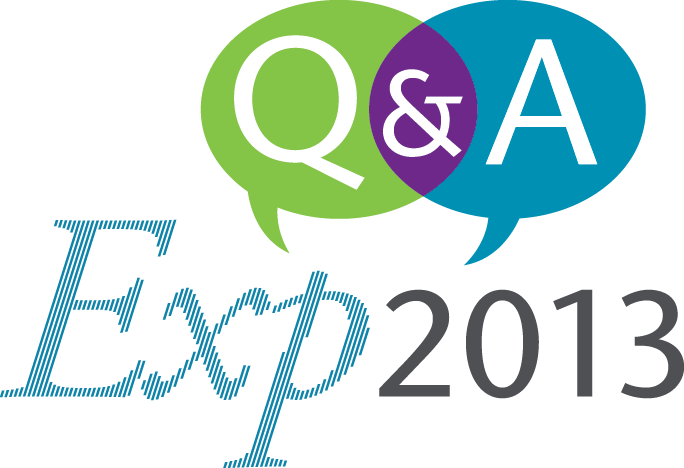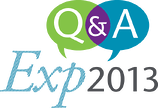Experience 2013: A preview of The Mosaic Company's session
Using diary and journal to maximize the effectiveness of corrective actions
At the upcoming
Aon eSolutions 2013 Experience Conference in Atlanta, I'll be joining
LaDonna Williams and
Pat Green of
the Mosaic Company to lead a session discussing Mosaic's unique use of
Aon RiskConsole (
RMIS System) to manage corrective actions. This conference will be LaDonna's eighth Experience and Pat's third event.
I recently caught up with LaDonna, EHS Specialist and member of the Aon eSolutions Client Advisory Board, and Pat, EHS Systems Specialist, to discuss the session.
What is the planned topic of your session at the Experience Conference in Atlanta?
KEY TAKEAWAYS
What's unique in this session?
What's the business value?
Who will find this session of interest?
|
LaDonna Williams: We'll be discussing how Mosaic uses RiskConsole's diary and journal function to maximize the effectiveness of corrective actions. We plan to focus especially on some of the unique aspects of how we manage corrective actions, including how we evaluate them for effectiveness and how we assign them at the location level when necessary.
Can you describe the Mosaic approach to corrective actions?
LaDonna Williams: Generally speaking, Mosaic assigns corrective actions anytime there is a need to correct or improve something after an injury, obviously, but also after an audit, a complaint, property damage, an environmental release or an issue with mechanical integrity.
Not every event calls for a corrective action, however. We measure the severity of events, and only those that reach a certain level get a corrective action.
An event can require multiple corrective actions, like additional training, replacement of equipment, and the like.
For example, following an event of sufficient severity, we would use RiskConsole to email supervisors the corrective action of discussing the event in morning meetings. Everyone assigned a corrective action is then responsible for documenting what he or she actually did to resolve the problem. There is a due date for each corrective action, and we run reports on past due and open items.
Please tell us a little about how you use the diary and journal function to evaluate the effectiveness of corrective actions.
LaDonna Williams: We tag some corrective actions for post-closure evaluation of their effectiveness. Pat and I think this is a unique use of diary and journal, and we think it will be of interest to RiskConsole users interested in tracking the effectiveness of almost any kind of action.
This is how it works. Once the corrective action is closedwhich is to say, after everyone assigned it has completed the actionand after a designated period of time has passed (say, 30, 60, 90 or 120 days), another email goes to the supervisor of each person assigned the corrective action. The supervisor can perform the evaluation or delegate it to someone closer to the actual execution of the corrective action.
Basically, we want to know that the corrective action was effective. We think that helps mitigate the underlying risks better than just closing out the action and moving on. The person evaluating the action is required to give a thorough, thoughtful evaluation of the action and its results.
If the corrective action is determined to have been ineffective, the evaluator and supervisor can rework parts of the action and reopen it. If a corrective action was found to be fundamentally ineffective, we document the initial action and its shortcomings and start the process of designing and assigning a brand-new action.
Please tell us a little about the location-level assignment of corrective actions. Assigning corrective actions at the location level is a unique use of diary and journal and should be of interest to a lot of RiskConsole clients.
LaDonna Williams: When theres a corrective action that we think is significant and should be assigned broadly, we decide at a corporate level which locations should have that action assigned to them. Aon eSolutions has worked with us to make our diary and journal function capable of assigning actions on a location-by-location basis through the hierarchy setup in RiskConsole.
What kind or results or business value has this use of diary and journal for corrective actions provided for Mosaic?
Pat Green: I think the biggest advantage weve seen is that, culturally speaking, we are now more focused on removing the underlying risk that an event brings to lightas opposed to merely fixing the immediate, most obvious problem.
I also think that evaluating the effectiveness of corrective actions gives people the motivation they need to think about the corrective actions theyve taken and whether they have actually improved the situation. In fact, weve seen marked improvement in peoples attitudes toward mitigating risk and eliminating hazards because they are now accountable for giving thoughtful consideration of the corrective actions theyre asked to implement.
Mosaic has a unique setup custom-tailored for its needs, but using diary and journal in the way Mosaic should be easily transferrable for other RiskConsole clients. Who do you think will find it most appealing?
LaDonna Williams: Actually, it might be even easier for most other RiskConsole clients to implement this kind of system, because our hierarchy is so complex. The simpler the hierarchy, the easier it should be to use diary and journal to manage corrective actions.
Pat Green: In my mind, this kind of process could apply to any type of eventnot just EHS-related. It could be used to track risk management findings of all kind. In fact, beyond risk management, multiple teams within Mosaic use RiskConsole diary and journal to track actions, including our product quality; mechanical integrity; maintenance and reliability; and continuous improvement groups.
Rob Fauser is an account executive with Aon eSolutions and is based in Chicago. Rob can be reached at 312-381-5063.













